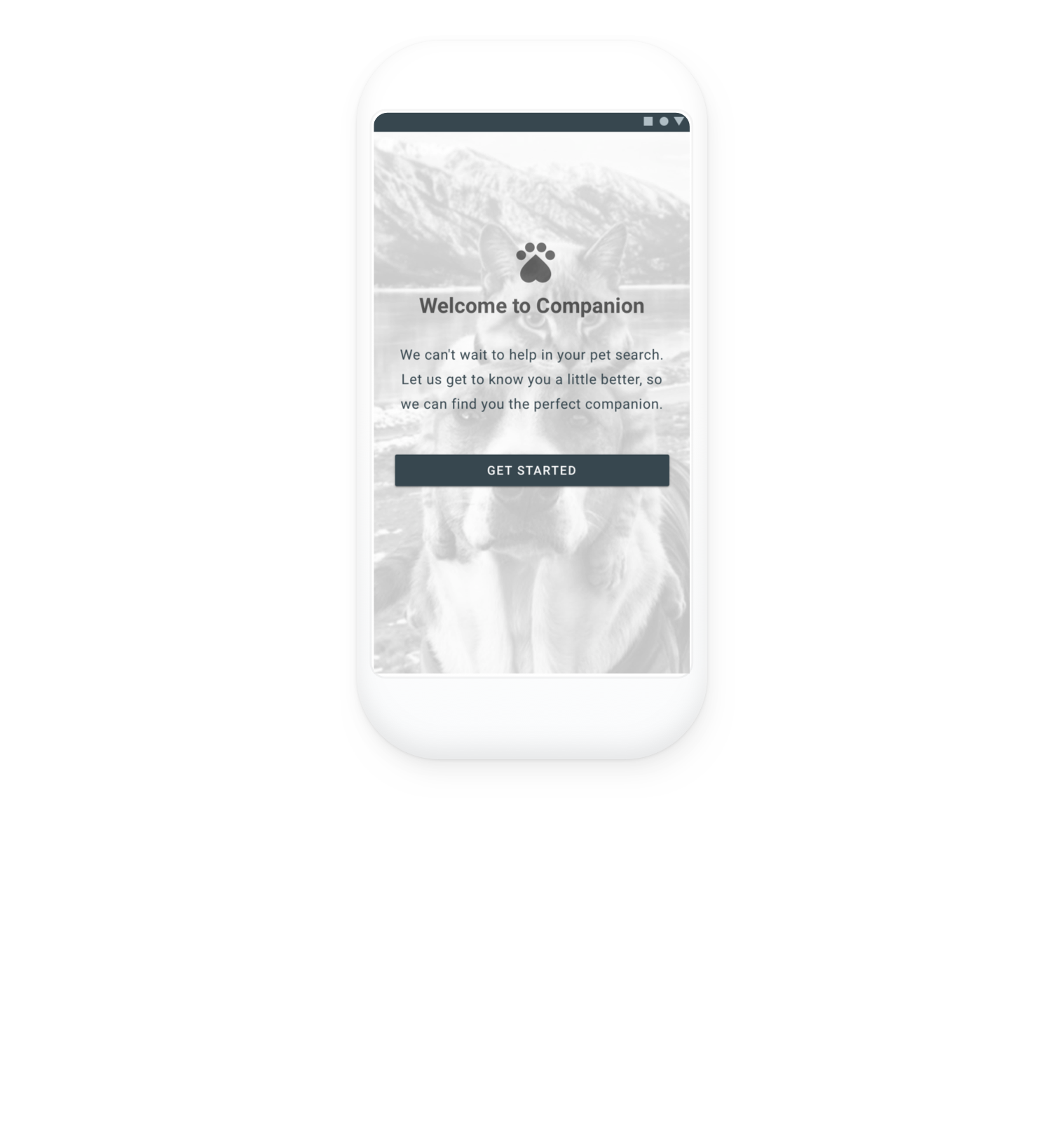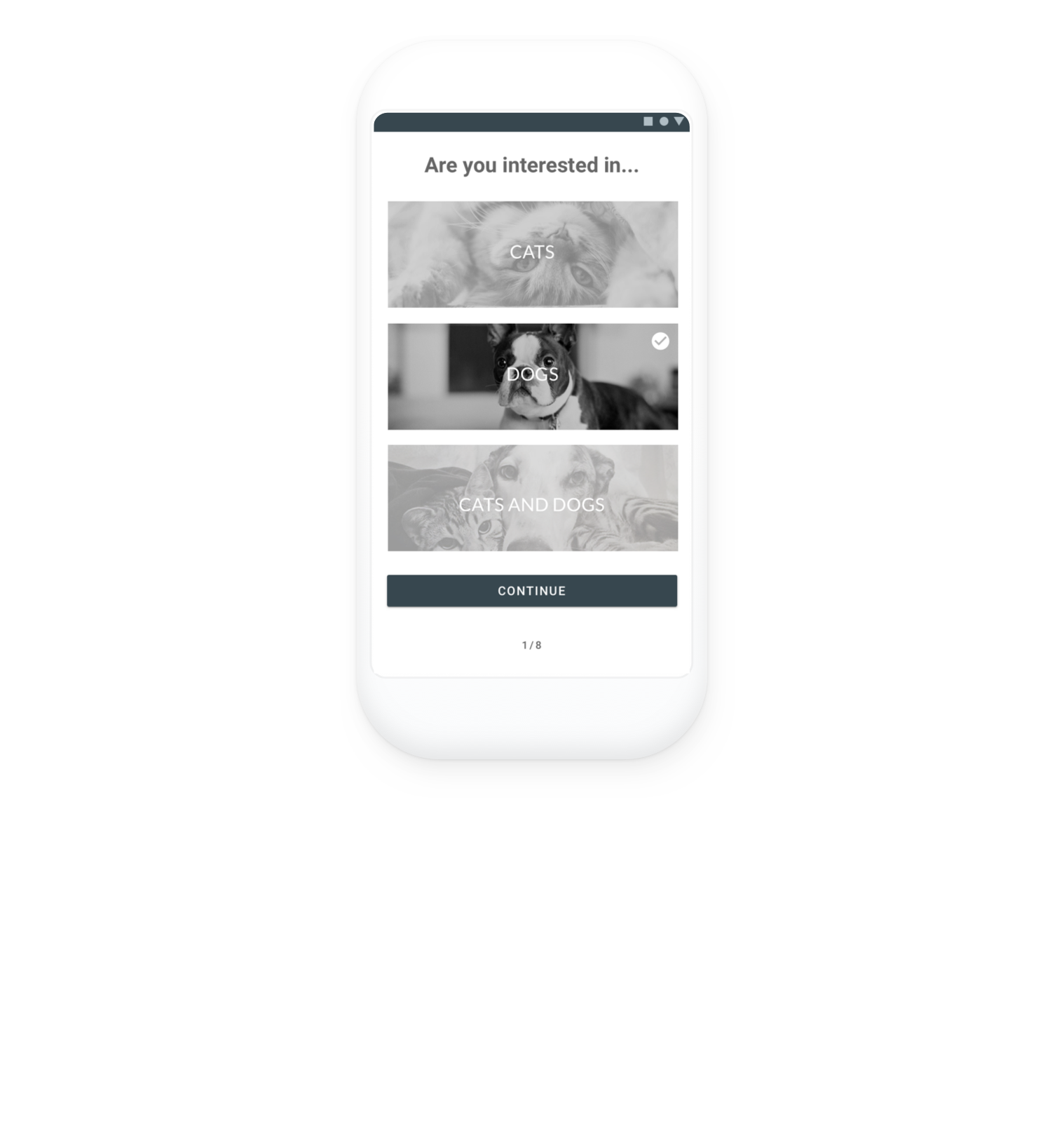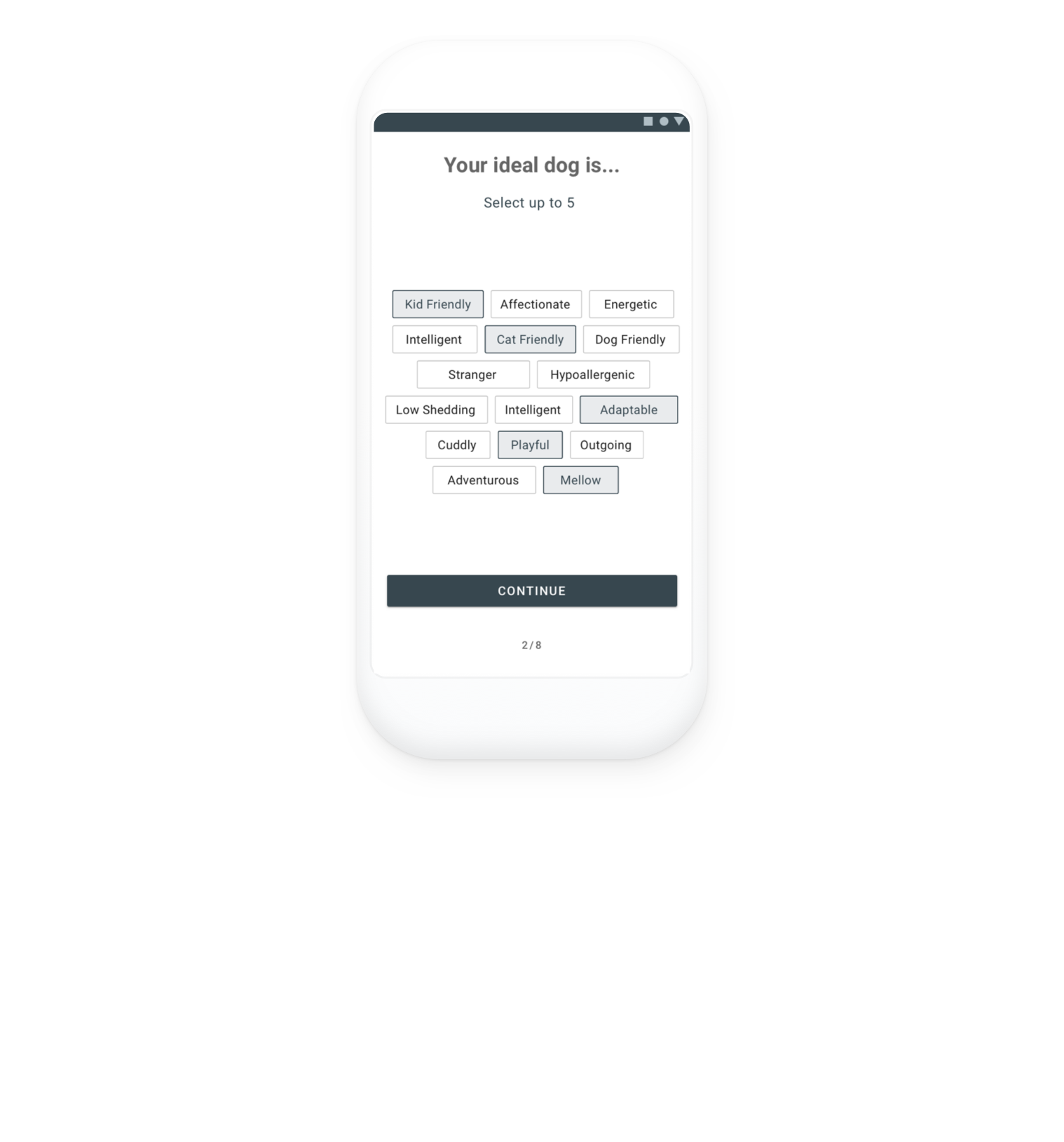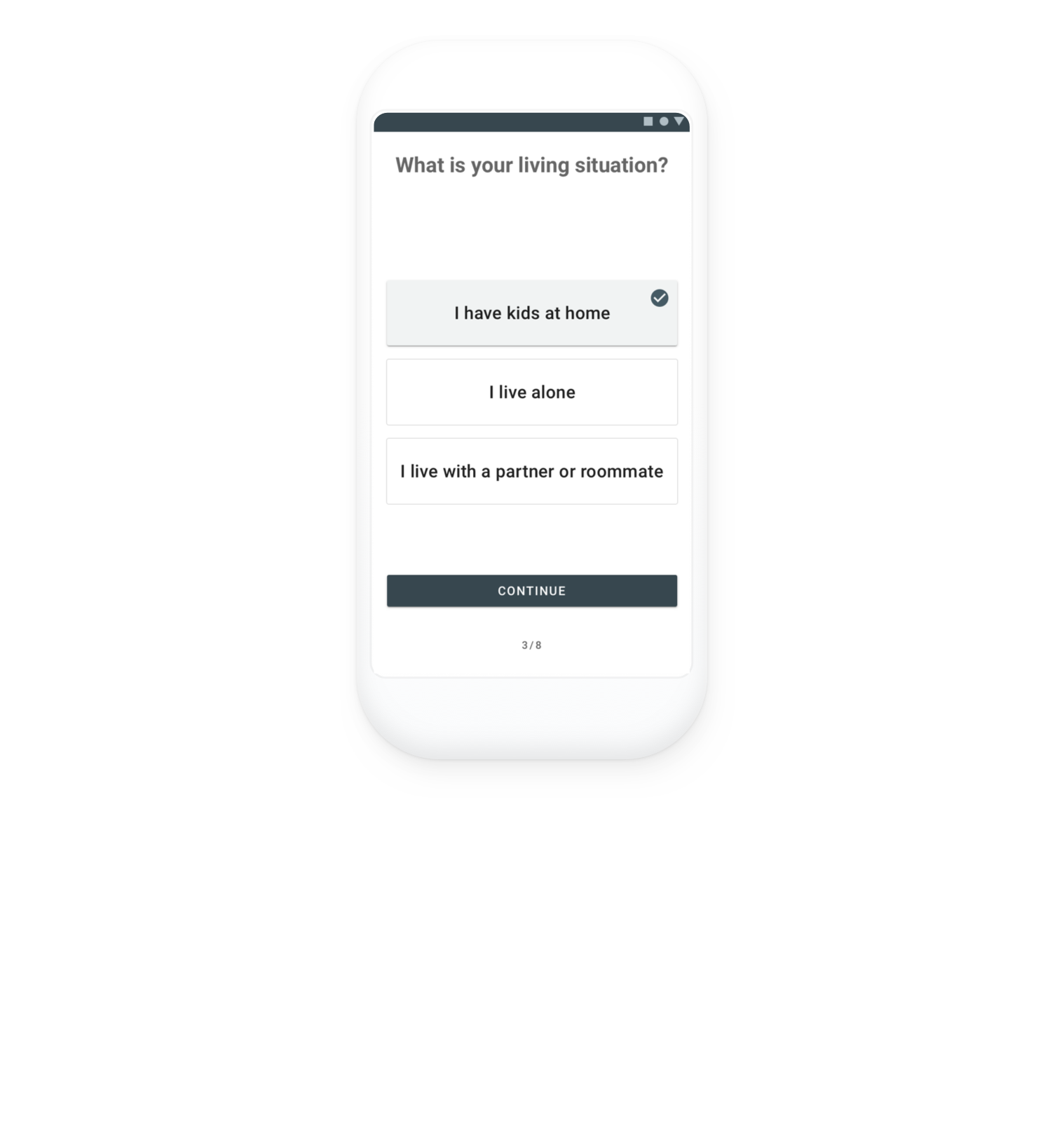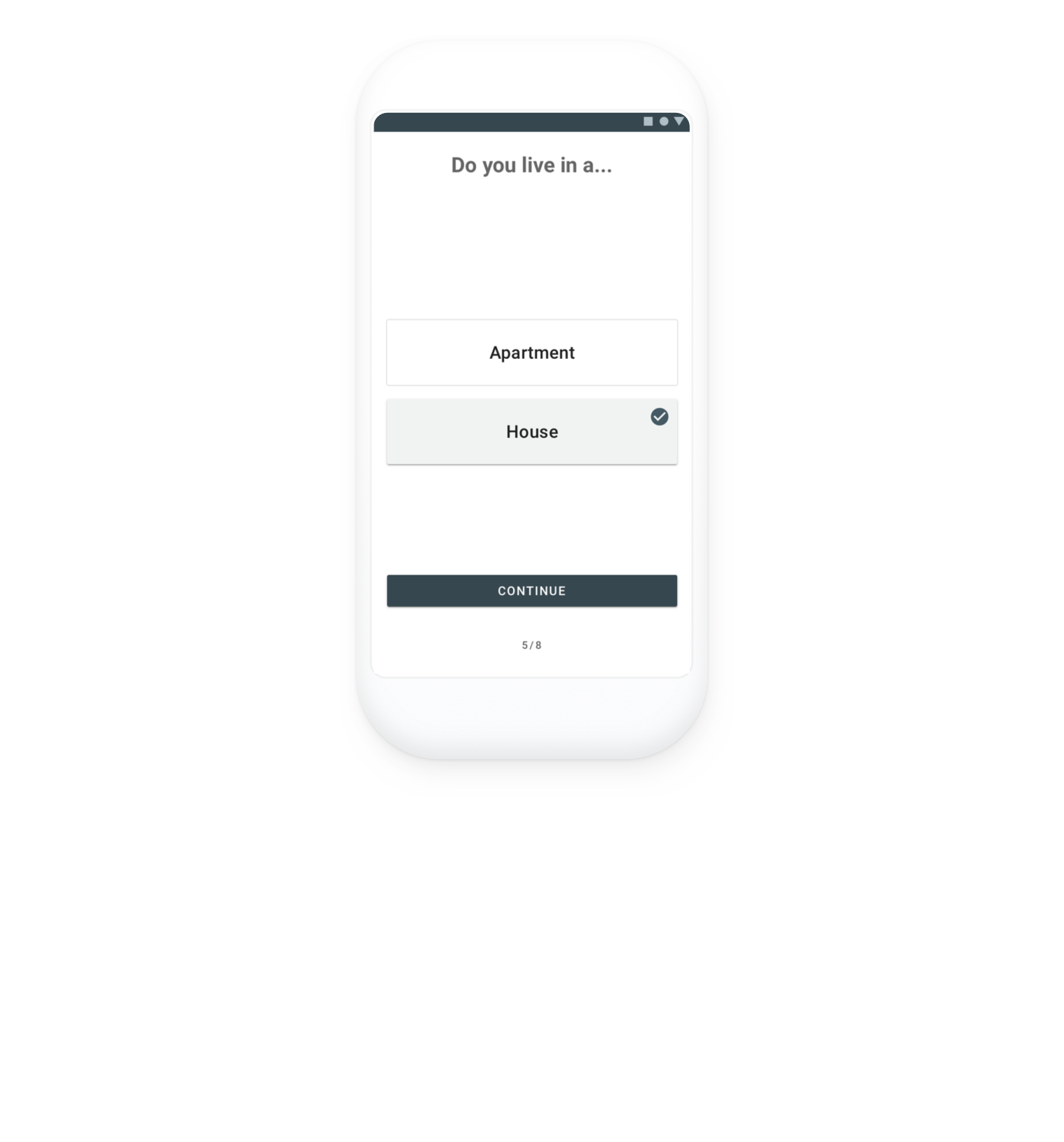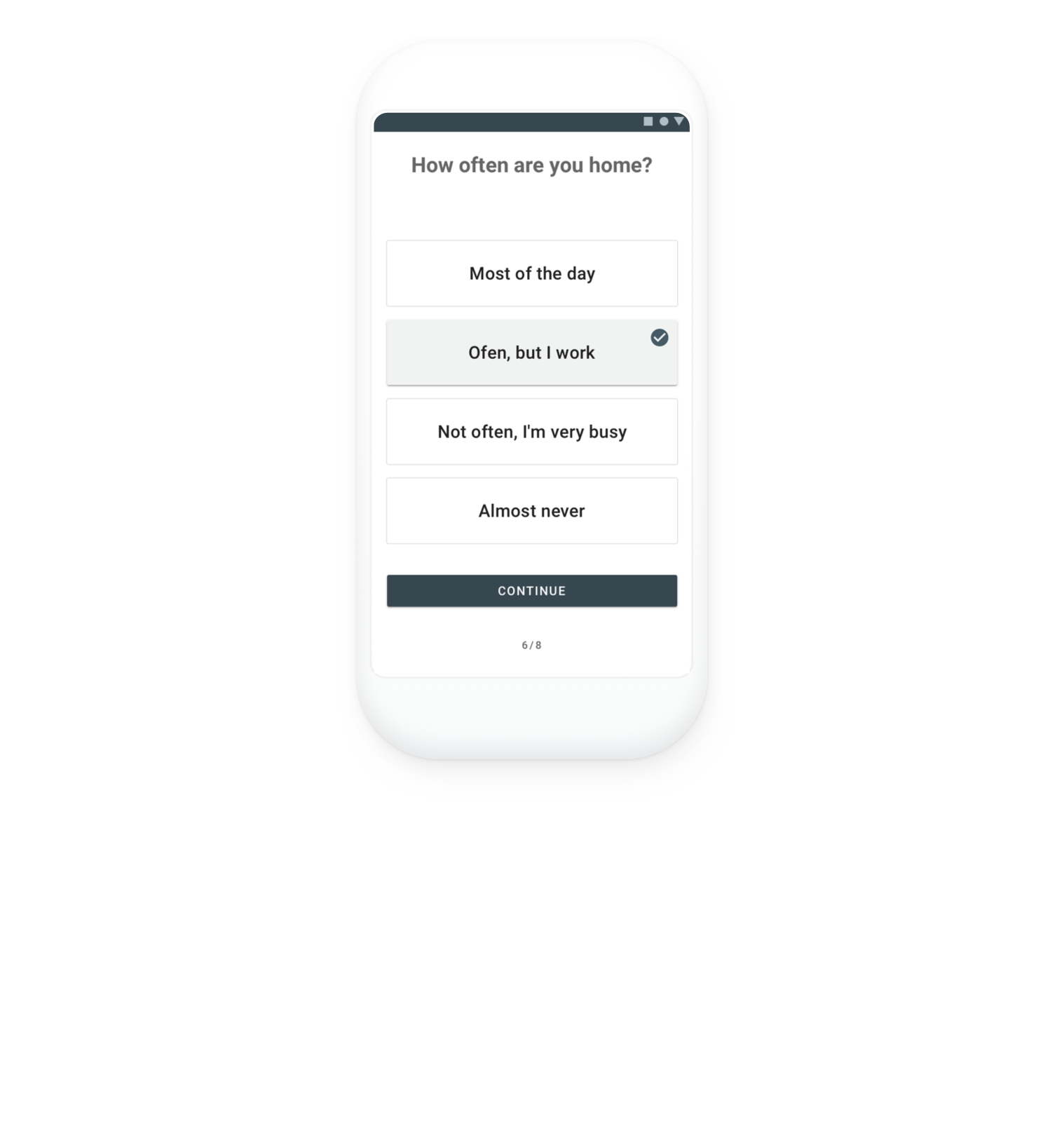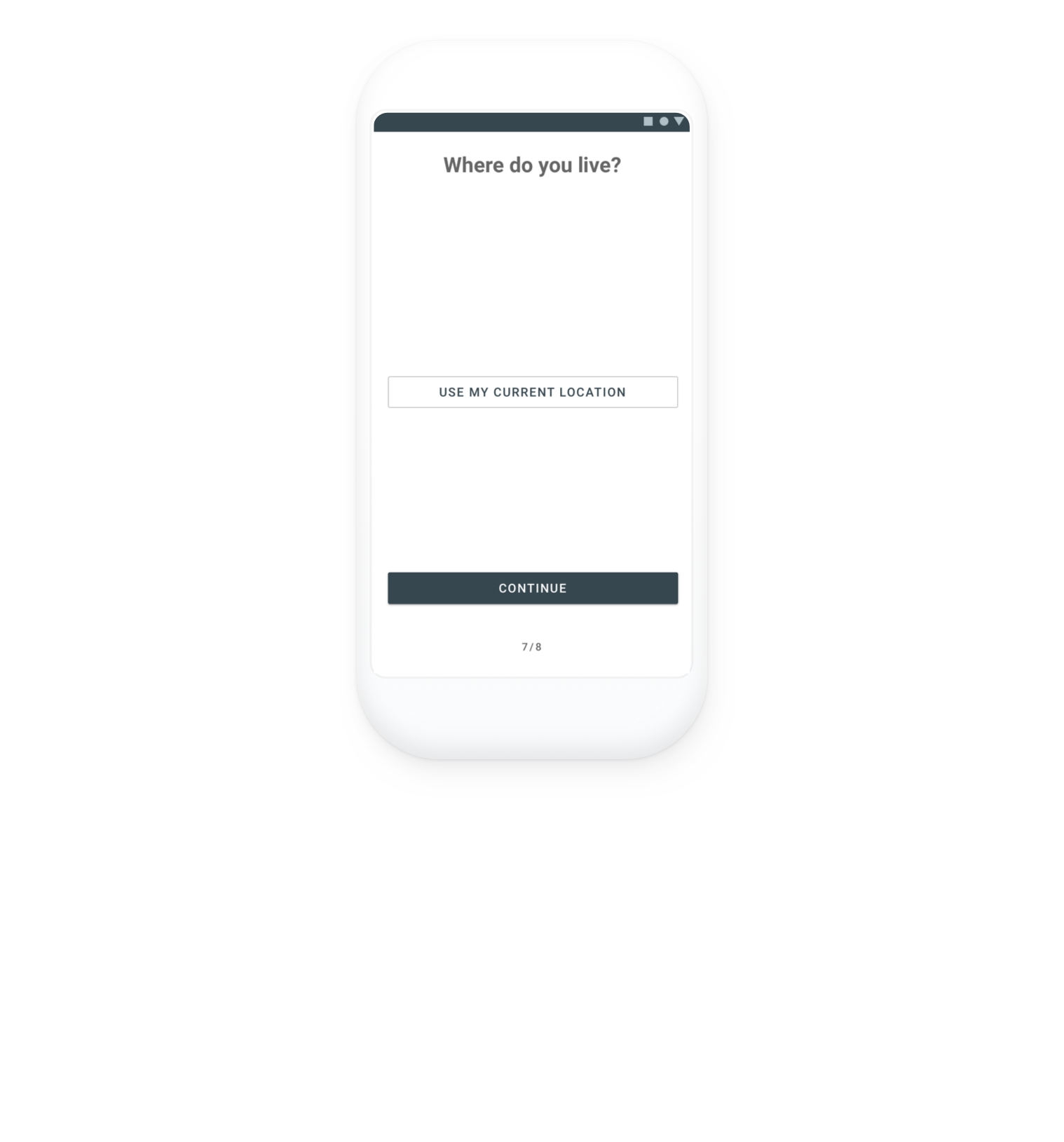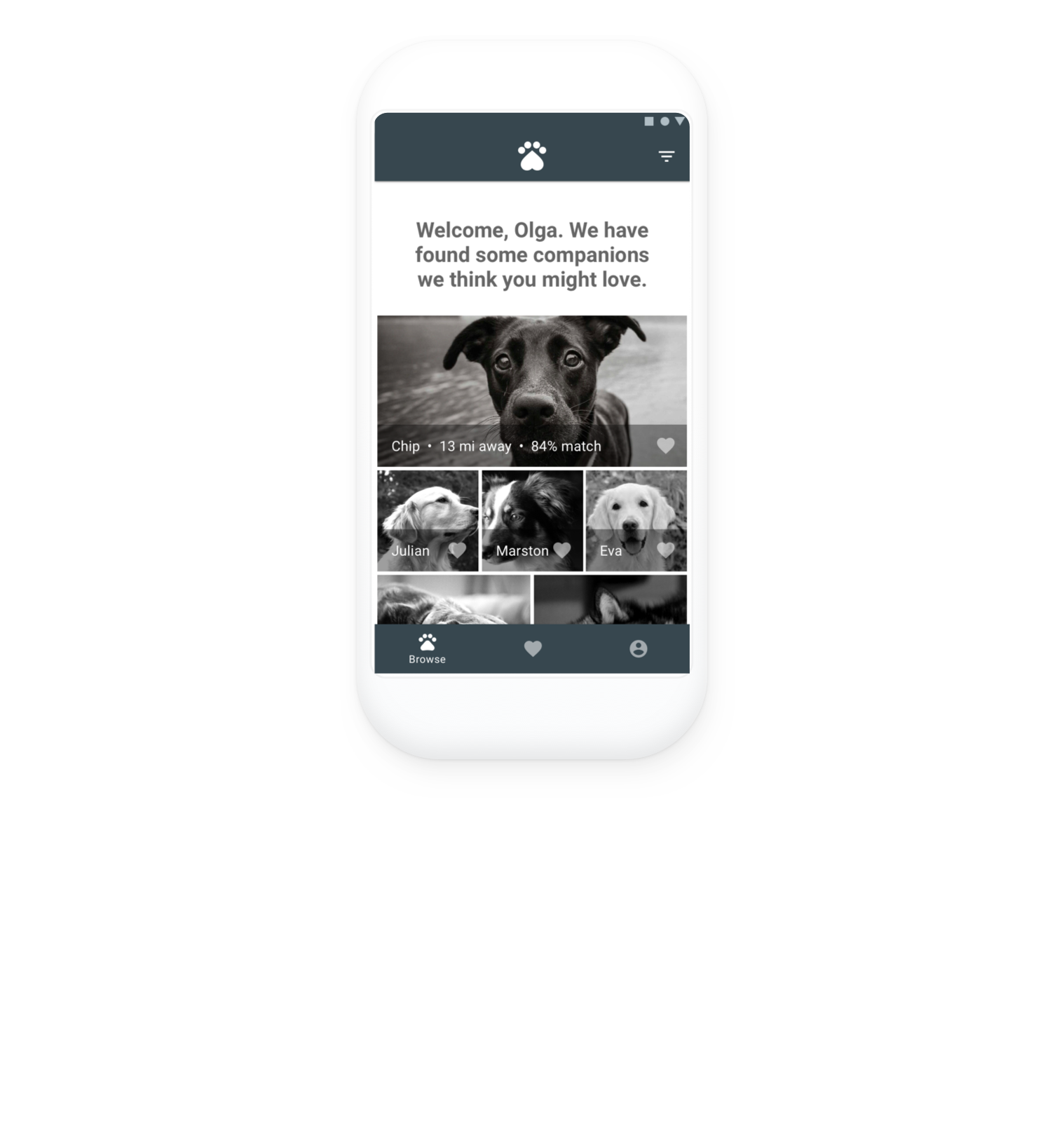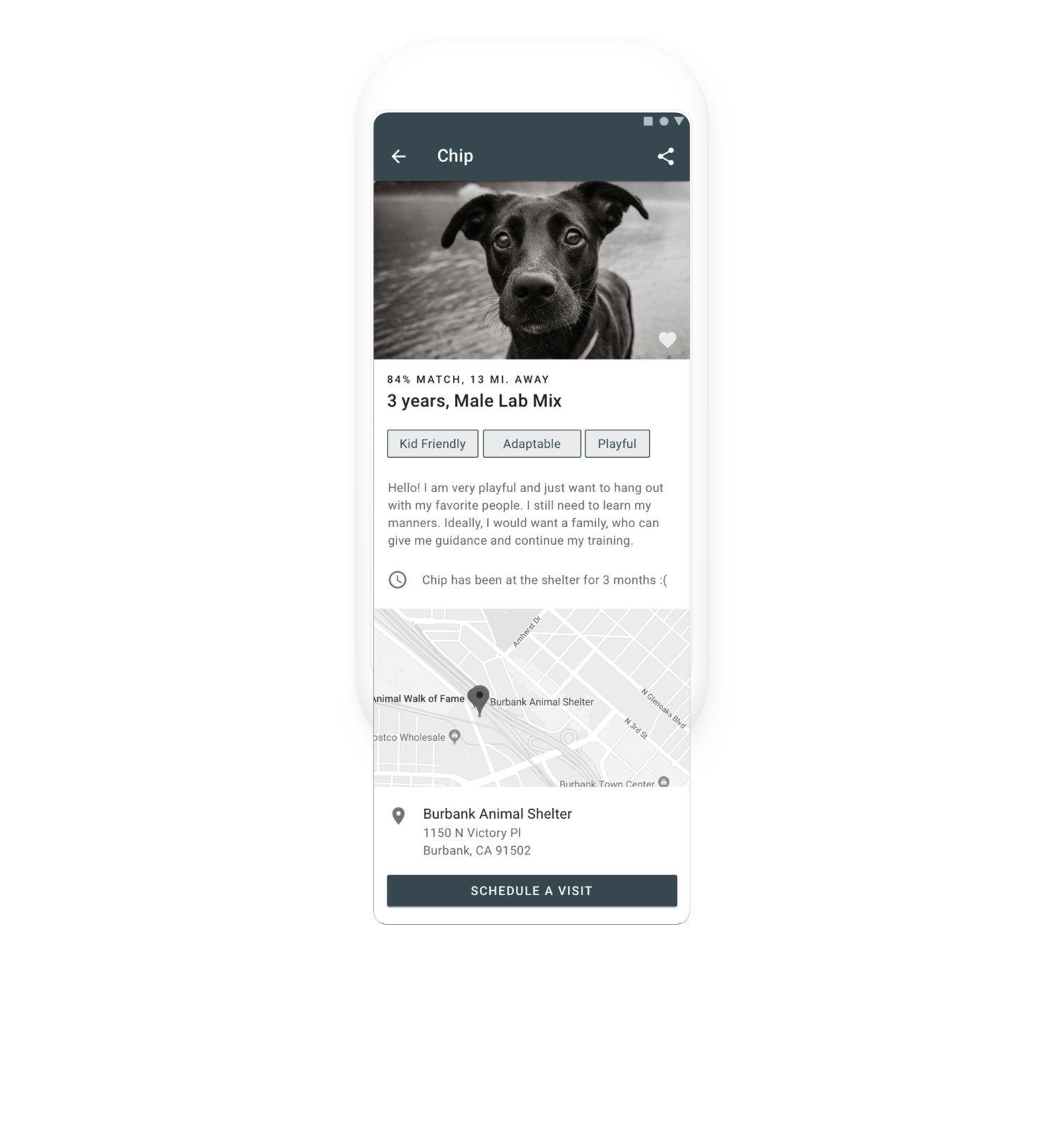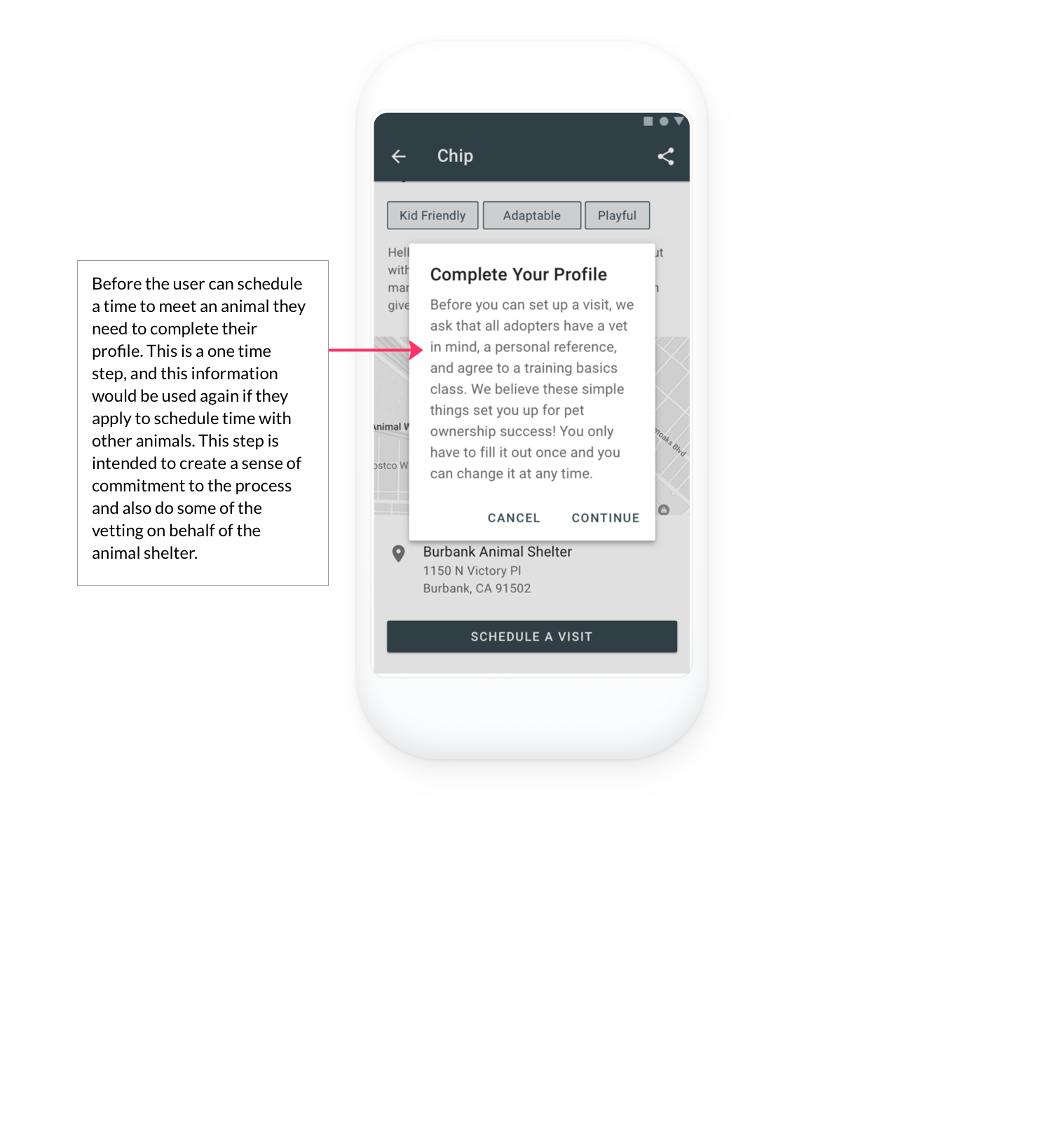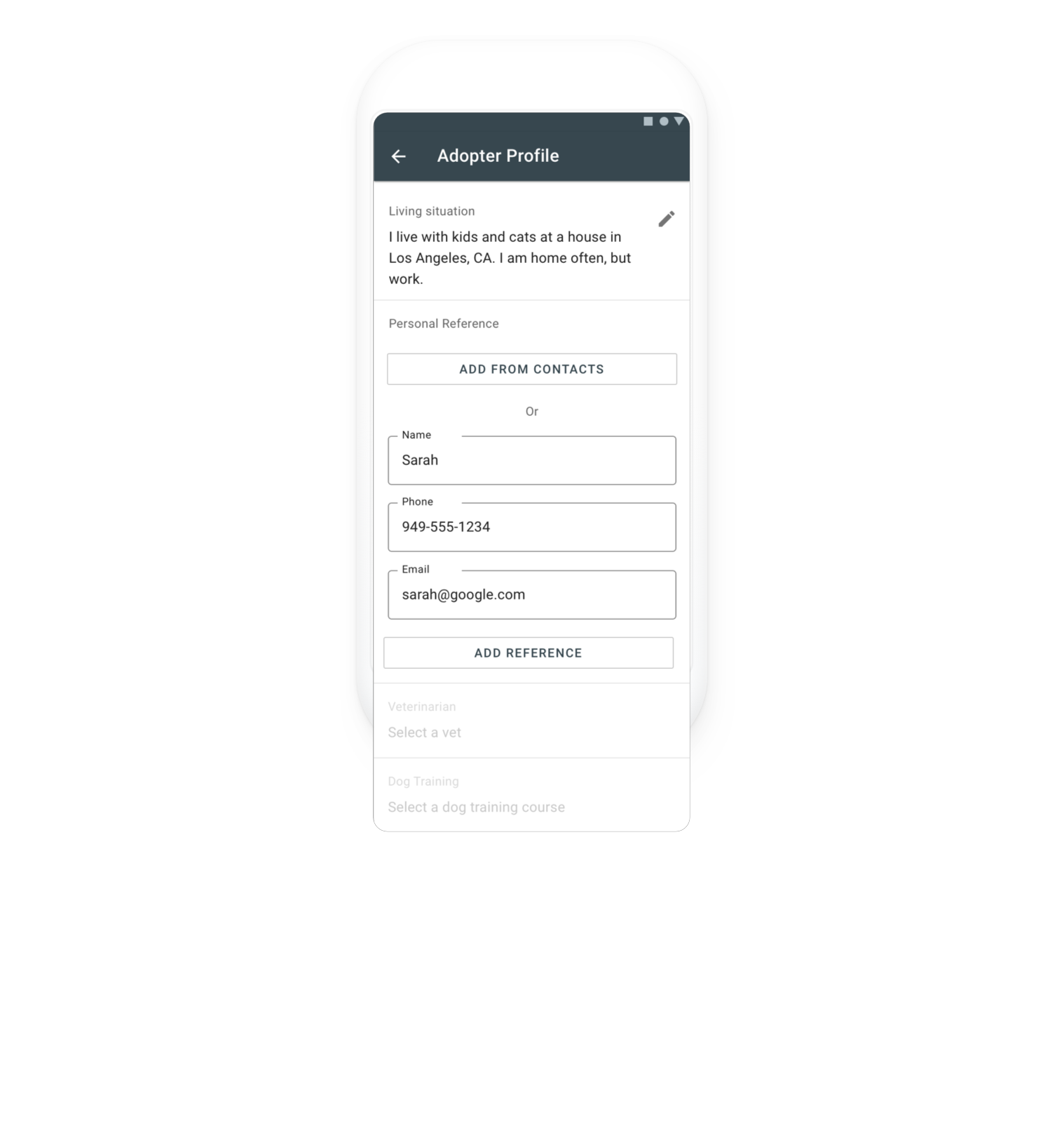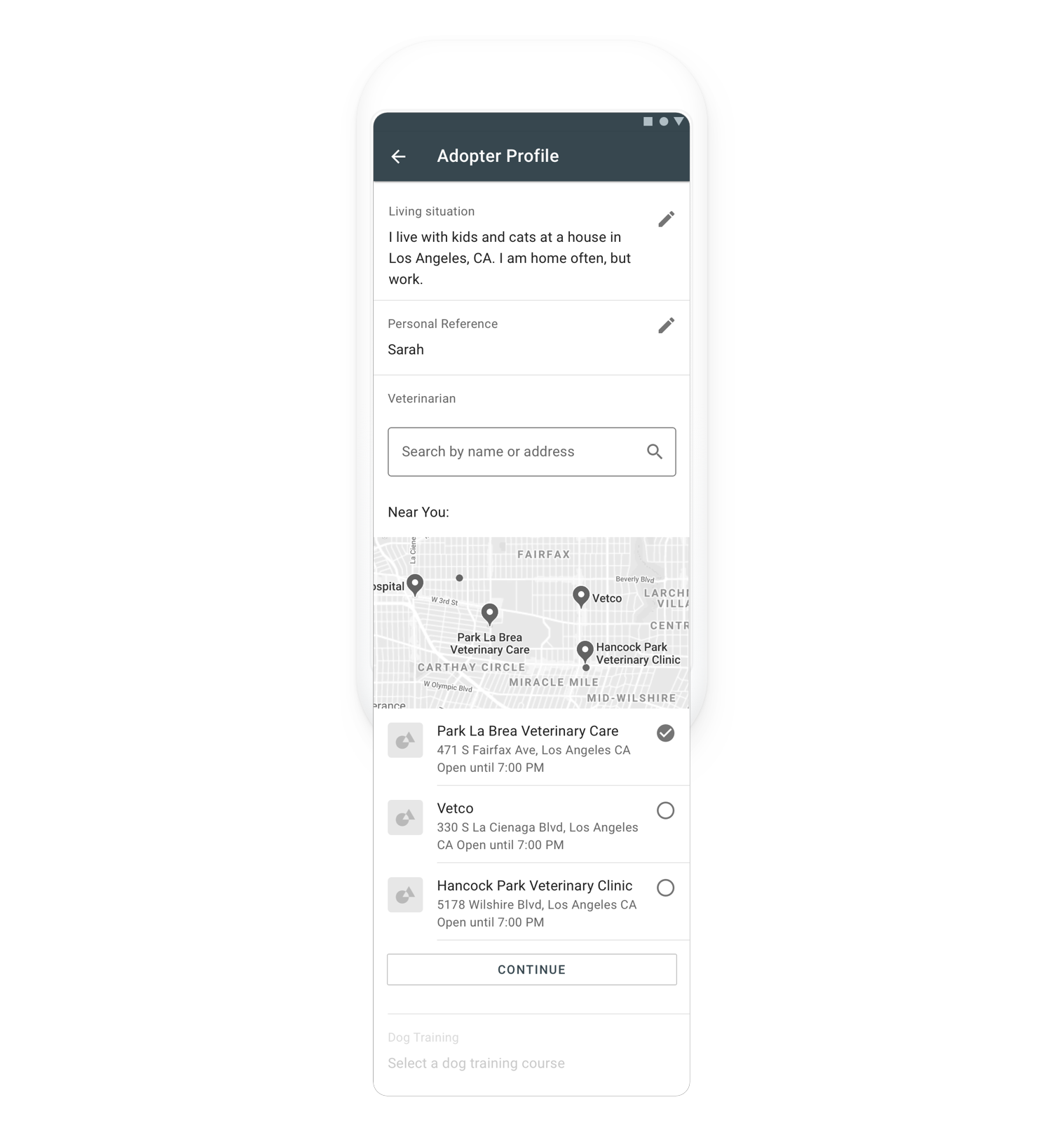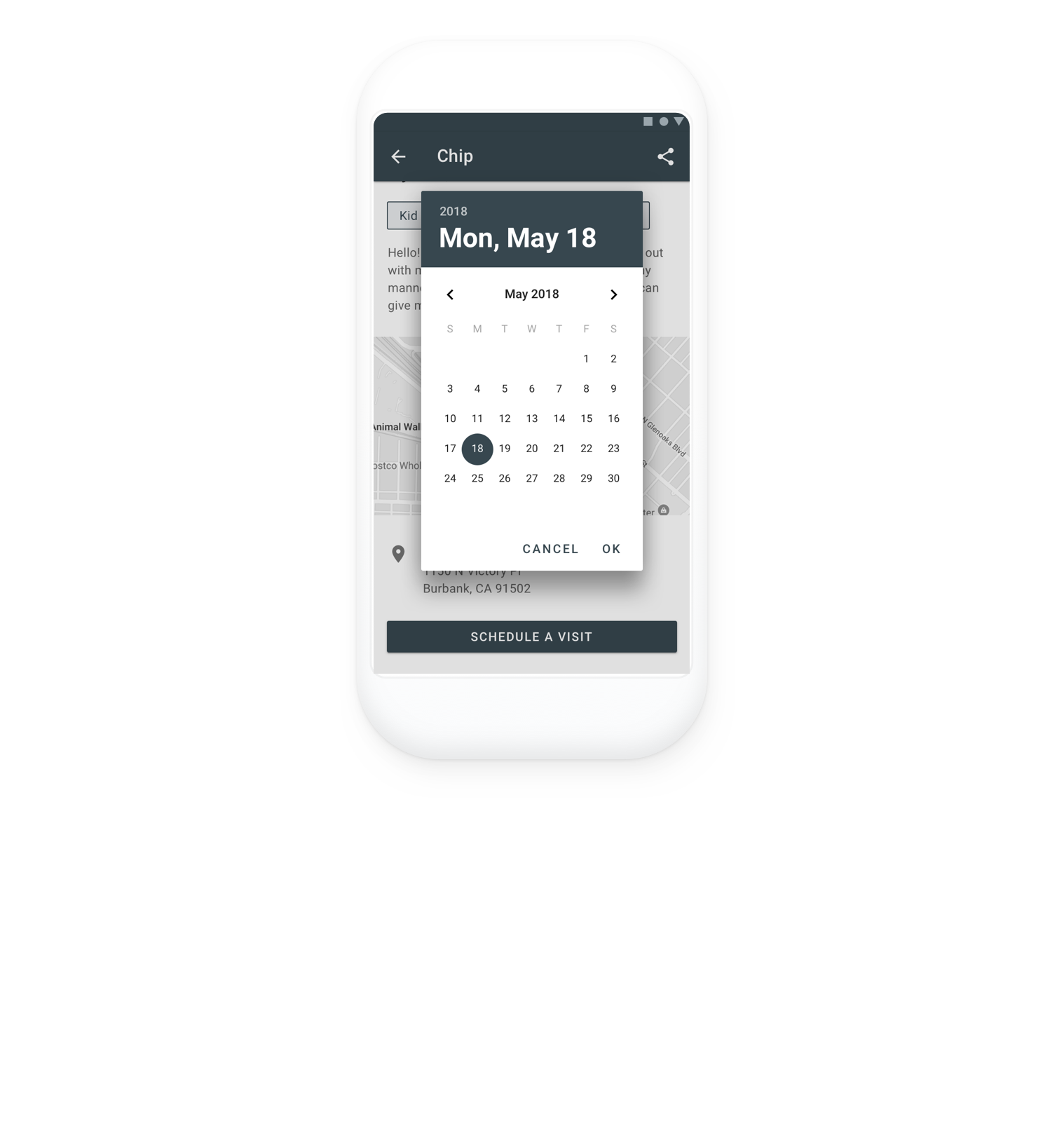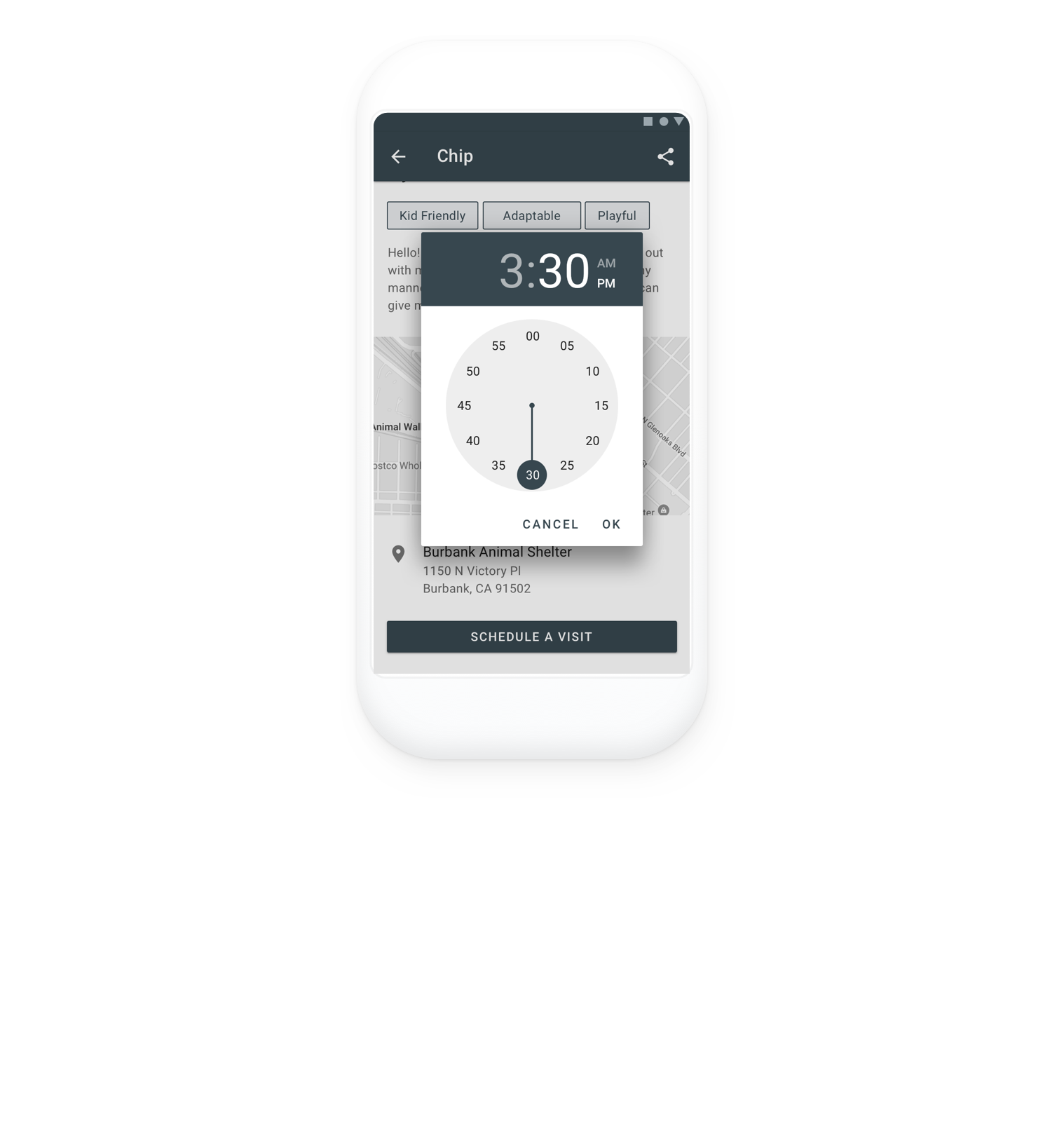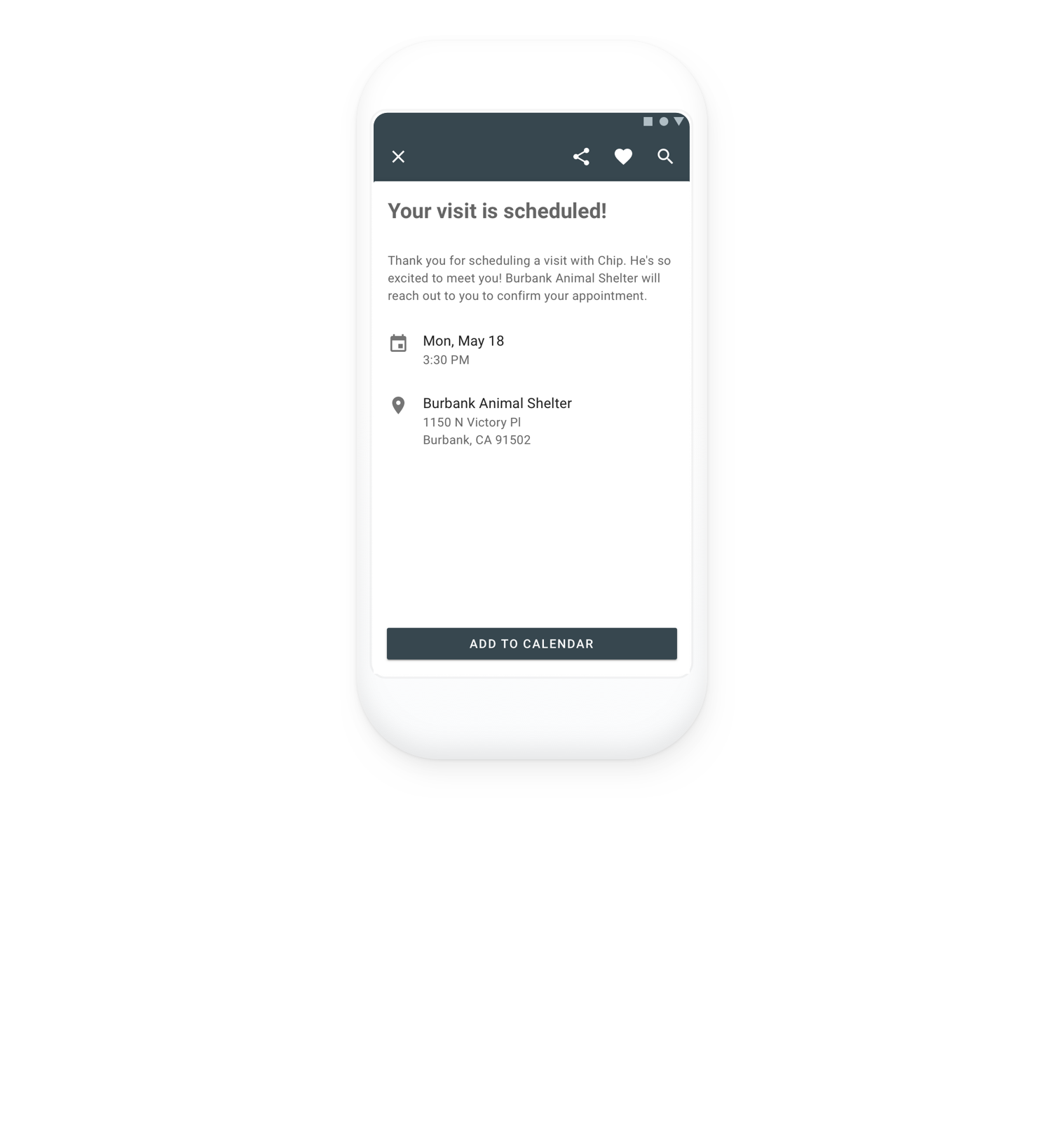Design Challenge
Millions of animals are currently in shelters and foster homes awaiting adoption. Design an experience that will help connect people looking for a new pet with the right companion for them. Help an adopter find a pet which matches their lifestyle, considering factors including breed, gender, age, temperament, and health status. Provide a high-level flow and supporting wire frames.
Building understanding
With this challenge, I decided to approach it using the design sprint framework. Although the methodology is generally intended for group settings, I still found many of the techniques to be highly valuable. I began by doing research and creating my own "lightning talk" on the subject of pet adoption. Here are a few of the the facts that stood out in my research:
6.5 million cats and dogs enter shelters each year, approximately 25% (low estimate) are euthanized
3.2 million animals get adopted out from shelters, but more than 10% (low estimate) are returned within 6 months
The top reasons for people returning their pets are: problematic/aggressive behaviors, the animal grew larger than they expected, cost, and health problems
Engagement is the top factor in longterm pet retention (i.e. vet visits, obedience classes, etc)
The American Humane Society outlined these as opportunities for higher retention:
Promote pet ownership amongst young adults (18-34)
Implement intervention strategies within the first weeks post-adoption such as programs that facilitate vet visits and cultivate a supportive relationship between adopters, shelter facilities, and communities.
Work with broad and diverse segments of society to reduce existing barriers to ownership like cost
Provide behavioral support to new adopters
Owners aged 25-34 had the highest percentage of retention of their adopted pets of any other age group
In California, the housing crisis is driving up animal surrenders because of finances
Most people find their pets through word of mouth
User Interviews
To build further understanding, I interviewed ten friends and family members who own and have adopted pets. The people I interviewed were diverse across the age spectrum, household/familial situations (i.e. kids at home, single, etc), location (city, rural, suburban), and types of pets owned. My goal with this approach was to listen to the needs of many types of users, and gain different perspectives to best solve the problem at hand. As I learned their stories, common themes emerged: the importance of a pet being a "fit" within the family, overall health, behavioral traits and issues, activity level (energy), a desire to rescue strays and not contribute to breeders and puppy mills, and fear of adopting the wrong animal for their lifestyle.
I asked the following questions to get the conversation started:
How long have you had pets?
What types of pets do you have?
When you are considering adopting a pet, what are the most important qualities you are looking for?
Have you ever adopted an animal from an animal shelter/rescue agency before?
What factored into your decision to adopt through an animal shelter/rescue agency?
What was your experience like?
Did you have any concerns or reservations?
Is there anything that could have made your experience better? If so, please explain.
Age
household
Gender
Pet type
OPPORTUNITIES
After synthesizing my external research and user interviews, I opted to define opportunities using the "how might we" formula to begin generating ideas for potential solutions. This method feels less committal and allows me to explore my thoughts without getting too prescriptive. As I read over my notes themes began to emerge, and I realized I wanted to not only focus on creating an app that assists people in finding the right animal, but create a platform that would encourage retention post-adoption.
pet retention and Fostering
There are many apps on the marketplace (Pet Finder, Craigslist, Petdar, WeRescue...to name a few) that show animals available in your area, but do little else. Based on my research, my own experience adopting a cat from the Southern California Siamese Rescue, and conversations with pet owners, I decided to go in the direction of an app that promotes retention and engagement.
When I adopted my cat, Southern California Siamese Rescue was very vigilant in their application process. I was required to provide a name for the vet I would be using, a promise that I would take my new cat to the vet within the first six weeks (even though she already had vaccines), and two personal references to attest to my character. Clearly, their rationale for this was to insure the cats they adopt out go to positive homes and stay there. Statistically cats and dogs who see a vet and go to training within their first few months of adoption tend to remain with their adoptive owner at significantly higher rates than animals who do not get this same treatment. These activities not only help the animals stay healthy and obedient, but an investment is made in their wellbeing on the part of the owner.
Another idea I think is worth exploring is incorporating a 6-8 week mandatory foster period before official adoption. During this period, the owner would required to go to training classes (this applies to dogs only) and take their animal to the vet. Having a "trial" period, but requiring engagement allows for a person to test out if this is the right animal for their lifestyle while promoting bonding. If after a good faith effort, the animal is still not the right fit for the family, it would remove the stigma of returning the animal to the shelter. One of the top concerns I heard in user interviews was a worry that the animal would not be a fit within their family or that the animal would display different personality traits when they arrived at home. My idea is well intended, but it would need to be tested further to see if a mandatory fostering would merely open up the possibility of an even worse revolving door of pets going in and out of homes, or if this practice coupled with engagement activities would improve retention overall.
DESIGN
With my top focus being retention and engagement, I began to create a high level flow of what I envisioned a first time user experience could be. When I moved into wireframes, I borrowed inspiration from dating apps for the onboarding experience. I saw the parallels between finding a match in a human companion and an animal companion. Users of an app like OKCupid willingly express their desires and preferences before seeing potential matches, so why not apply this successful formula to matching humans with animals?
While I did consider that filling out profiles and onboarding does create additional layers of friction for seeing the animals in need, my logic in requiring these steps was to improve the quality of the users engaging with the animals versus opting purely for volume. There is a delicate balance of trying to get these wonderful animals in front of many eyes, but also trying to make sure there is a level of commitment and investment when a person inquires on an animal.
User Flow-first time opening app
First Time User Experience wireframes
final considerations
I realize my proposed idea introduces many layers in the animal adoption process. Here are things I did not have the time to explore, but know would be important next steps:
User testing the placement of selecting a vet/training. While my idea was to promote engagement and retention by selecting a vet and trainer upfront, I would want to test the order in which these things are required. Does it make more sense to only require this after they meet the animal? In addition, I would want to track if these measures had any significant impact on post-adoption retention.
Considering the "B2B" or shelter side of the application. A top priority would be making sure that this application does not make the lives of shelter workers more difficult, but helps to consolidate and streamline their vetting and adoption process. Knowing how to design the shelter side of the application requires being embedded in their day to day to understand the pain points that need the most attention. Another consideration: how would the app be connected with the final adoption process and should there be a component to the platform that processes payment and follow ups post-adoption?
Designing a post-adoption state of the application for the user. When I ask the user to select a vet and dog training upfront, how do we follow that up when they actually adopt the animal? I would want to design out that use case further. My initial thoughts are to incorporate GooglePay and offer their first vet visits and training classes as a bundled cost that is a mandatory part of adoption.
Exploring the idea of foster to adopt. Since I did not design out the flow of after the user goes to an animal shelter and brings home an animal, I would need to assess how effective "trial periods" are. It would be interesting to ask shelters to try out a program like this, allowing 6-8 week trials but mandating a vet visit and training courses, before adding it in as a part of the apps model. It is possible that it could compound the problem of overcrowding and flippant, indecisive pet owners. I believe the only way in knowing if this idea has legs, would be to try this out in practice.














